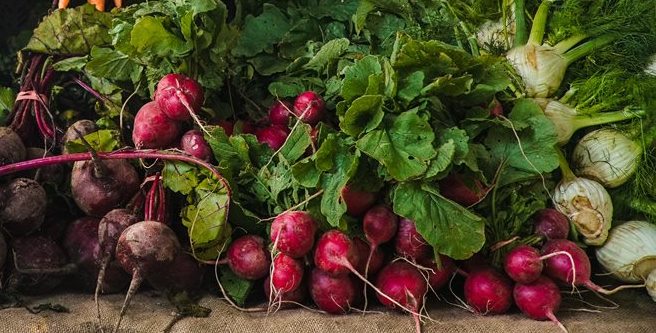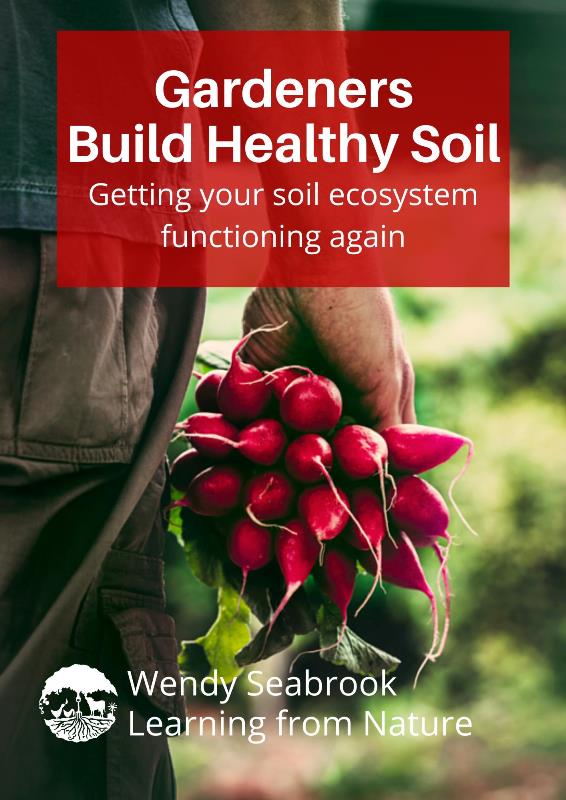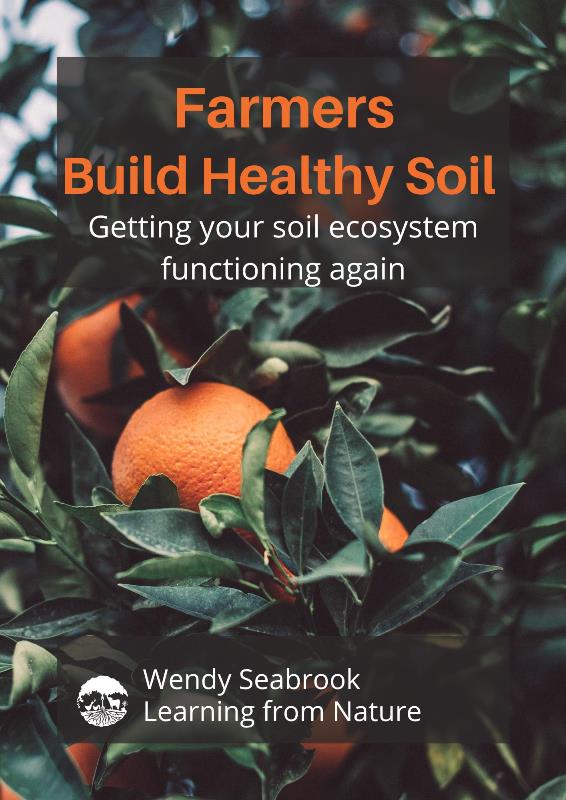How can we grow nutritious food when food now contains fewer nutrients than in the 1930s, despite decades of research and billions invested in improving agriculture?[1] The solution can be found in recent research supporting the premise that the best way to grow nutritious food is with functioning soil ecosystems.[2]
The researchers compared vitamin, mineral, and phytochemical concentrations in cereals and vegetables, and unsaturated fatty acid profiles in beef and pork, from ‘conventional’ farms and farms using regenerative practices. Their results show that by improving the levels of organic matter and the abundance and activity of microbes in the soil, we can increase the nutritional content of food.[2] Other studies substantiate this link and the role of soil life and organic matter as indicators of our soil’s capacity to produce healthy food.[3][4]
The findings are significant. While many assessments have compared differences in the nutritional quality of foods grown with conventional and organic production practices, few have directly considered the influence of soil health.[3]
However, it’s important to realise that the research doesn’t demonstrate that adding bio-fertilisers, compost, mulch, and other organic materials is an effective way to grow healthy food.
Having loads of organic matter and microbes in our soil, in and of themselves, doesn’t make our food more nutritious! We need functioning soil ecosystems to harvest nutritious food from our veggie gardens, orchards, and fields. We don’t have organic matter and microbial activity without the ecological systems, managed by microbes and other soil organisms, manufacturing organic matter and maintaining the soil infrastructure.
How do we Repair Soil Ecosystems?
By growing enough vegetation to provide a generous, diverse and preferably consistent supply of root exudates (the sugars and proteins plants secrete from their roots) and decaying leaves, stems, and roots to feed the soil organisms managing and running our soil ecosystems.[5]
Retrofitting our farms and gardens to enhance food supplies to our soil organisms, we naturally supply nutrients to our crops without the necessity of fertilisers, minerals and other nutrient supplements! With billions of years of on-the-job training, soil organisms are the experts at managing our soil ecosystems and collaborating with plants in the supply of nutrients. We just need to give them a decent diet!

On the regenerative farms participating in the research, the farmers had modified their production systems to combine no-till, diverse cover crops, and diverse rotations – a technique known as Conservation Agriculture.[2] In making these changes, they increased the amount, diversity and consistency of food supplies to their soil organisms.
Remember, though, that there is a whole toolshed of regenerative practices.

What’s important is developing effective ‘place-based’ practical solutions suitable for our climate, other growing conditions, and the type of food we grow. For example, living mulch does a similar job to cover crops, but is more useful when a permanent ground cover of plants is required.
In tropical climates, farmers and food gardeners use agroforestry designs to supply additional organic materials from trees and shrubs to their soil ecosystems. They use leguminous and other ecological support species, plus trees supplying fruit, nuts, seeds, firewood, construction timber, pollen, and nectar for bees, fodder and forage for livestock.
Perhaps the most challenging part of regenerative work with soil is our interventionist mindset. Learning to respond to our local conditions, observe, and work with the experts at building healthy soil – our soil organisms, we grow nutritious food with functioning soil ecosystems.
Get practical advice to repair your soil ecosystem –
References
[1] Mayer, A. M., 1997, Historical changes in the mineral content of fruits and vegetables. Br. Food J. 99, 207–211. doi: 10.1108/00070709710181540
[2] Montgomery DR, Biklé A, Archuleta R, Brown P, Jordan J., 2022, Soil health and nutrient density: preliminary comparison of regenerative and conventional farming. PeerJ 10:e12848 https://doi.org/10.7717/peerj.12848
[3] David R. Montgomery and Anne Biklé, 2021, Soil Health Nutrient Density: Beyond Organic vs. Conventional Farming, Front. Sustain. Food Syst., 04 November 2021 https://doi.org/10.3389/fsufs.2021.699147
[4] Hepperly PR, Seidel R. Soil regeneration increases crop nutrients, antioxidants and adaptive responses. MOJ Food Process Technol. 2018;6(2):196–203. DOI: 10.15406/mojfpt.2018.06.00165
[5] Wendy Seabrook, 2021, How to Build Healthy Soil – Eco-logically Learning from Nature
The author, Dr Wendy Seabrook is the founder and CEO of Learning from Nature. Learning from Nature support food growers to grow food eco-logically.


